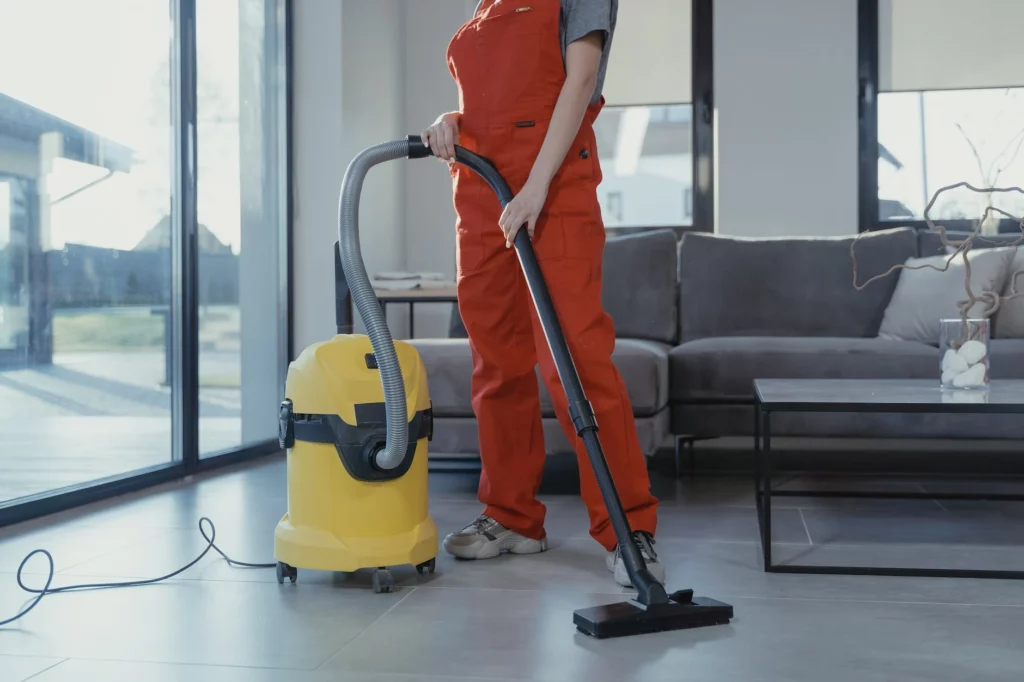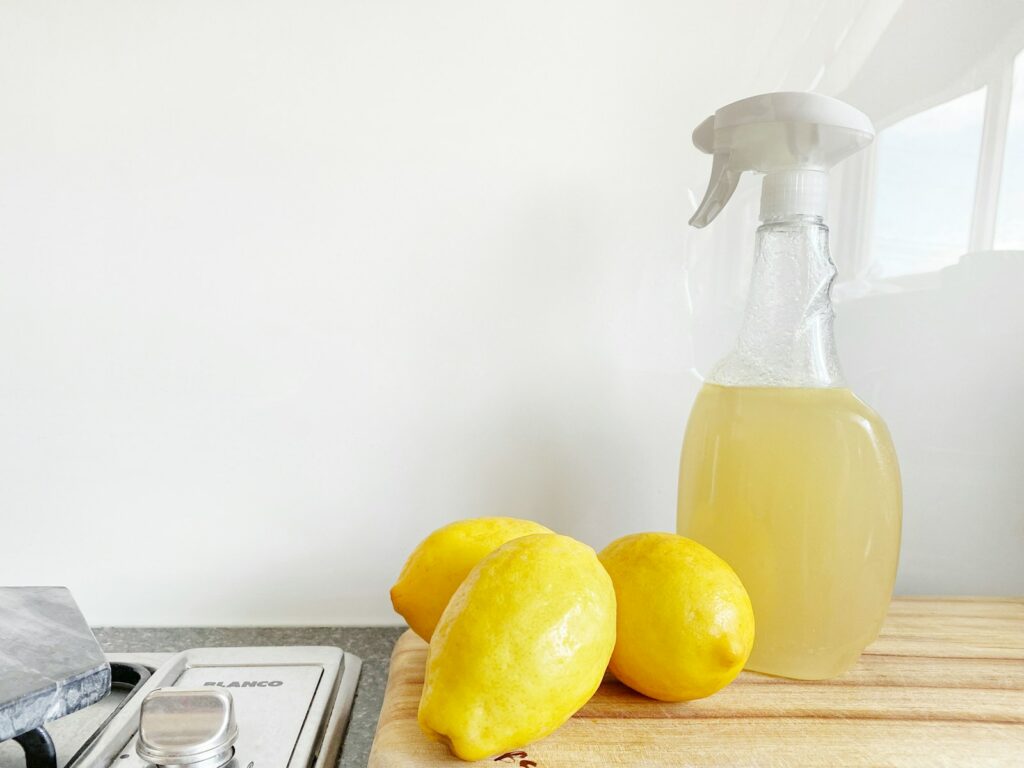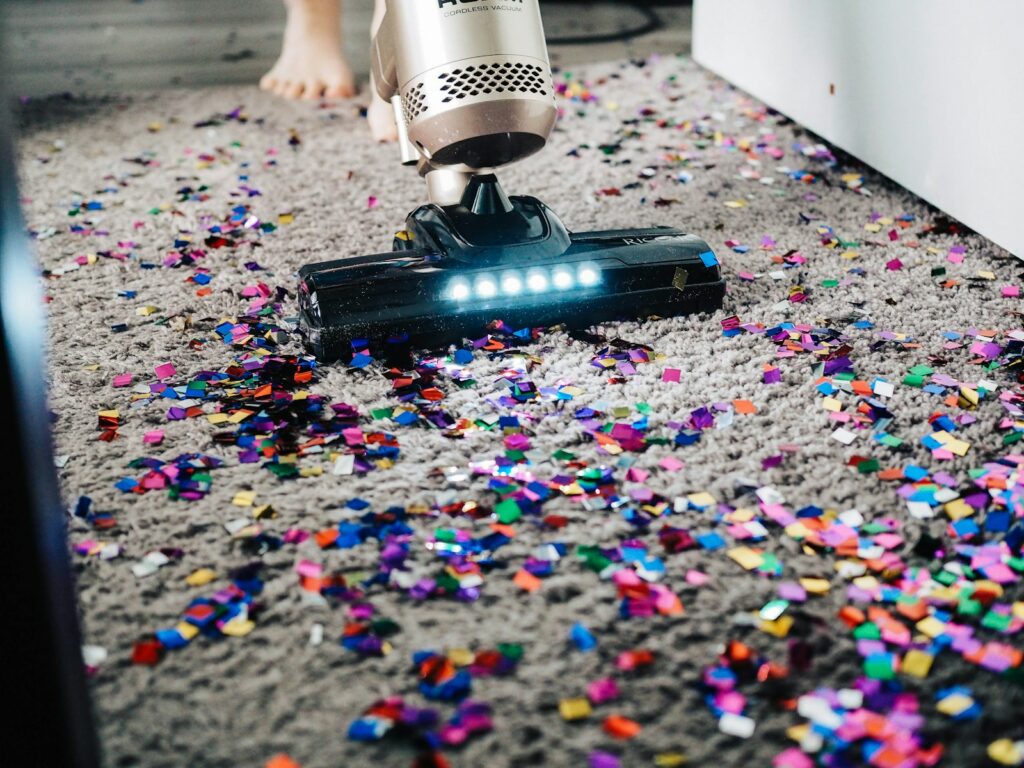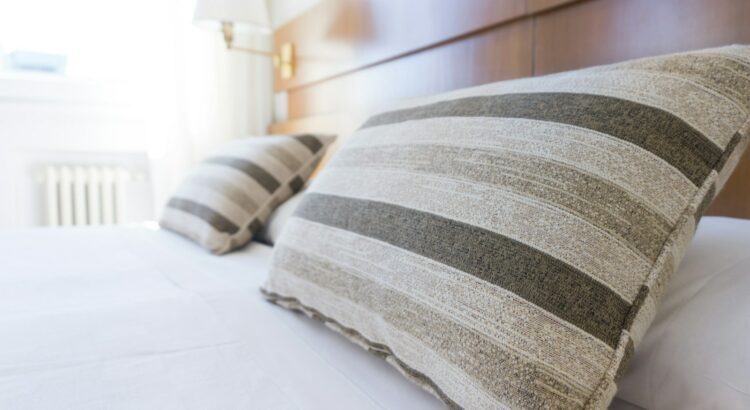Unseen dangers lurking in your home? Discover the ultimate solution for banishing allergens on your soft surfaces now!

Sneezing, coughing, and itchy eyes ruining your day? We feel you! Allergens are everywhere, especially on soft surfaces in our homes. From carpets to curtains, sofas to stuffed animals, we’ve got you covered with tons of fun tips and tricks!
Start by exploring this ultimate guide to cleaning soft surfaces like a pro and reducing allergens effectively!
Table of Contents
- Let’s Talk Soft Surfaces
- Understanding Allergens on Soft Surfaces
- Gather Your Cleaning Arsenal
- Expert Techniques for Allergy-Free Cleaning
- Cleaning Specific Soft Surfaces
- Taking Care of Soft Surfaces in the Long Run
- Innovations in Allergen Reduction Products
- Frequently Asked Questions About Cleaning Soft Surfaces
- Achieving Allergy-Free Bliss with Clean Soft Surfaces
Let’s Talk Soft Surfaces
The Importance of Soft Surface Cleaning
When it comes to cleaning our homes, we often focus on the hard surfaces like countertops and floors, leaving the soft ones behind. However, neglecting to clean soft surfaces can lead to a buildup of allergens, including dust mites, pet dander, and pollen. These microscopic intruders can trigger allergies, asthma, and other respiratory issues. So, next time you grab your trusty cleaning supplies, don’t forget to give special attention to your soft surfaces.
Common Allergens Hiding in Soft Surfaces
Soft surfaces are like cozy hideaways for allergens. Dust mites make themselves comfortable in your mattresses, pillows, and carpets, while pet dander can cling to upholstery and curtains. Even pollen can find its way into these surfaces, wreaking havoc on your allergies. By tackling these common allergens head-on, you can create a healthier environment and enjoy fresh, clean air.
Prepping for the Battle
Before we embark on our soft surface cleaning adventure, let’s make sure we have all the necessary tools and products. Grab your vacuum cleaner with HEPA filtration, a gentle stain remover, microfiber cloths, and a steam cleaner, if available. For our natural cleaning enthusiasts, baking soda, white vinegar, and essential oils will be your go-to weapons in this allergen-reducing mission.
Understanding Allergens on Soft Surfaces
Allergens are tiny substances that cause allergic reactions in sensitive individuals. These can include dust mites, pet dander, pollen, and mold spores. When these allergens accumulate on our soft surfaces, they become a breeding ground for discomfort and sneezes!
The Hidden Dangers Lurking on Soft Surfaces
Soft surfaces, such as carpets, mattresses, and curtains, are not just cozy spots for us to relax; they are also magnets for allergens. These allergens can get trapped in the fibers, making it challenging to eliminate them completely without proper cleaning.
Common Allergens Found on Soft Surfaces
The most common allergens found on soft surfaces are dust mites, pet dander, and pollen. Dust mites thrive in mattresses and upholstery, while pet dander can accumulate on carpets and rugs. Pollen, on the other hand, can easily latch onto curtains and fabric blinds, triggering allergies seasonally.
Gather Your Cleaning Arsenal
When it comes to cleaning soft surfaces, it’s essential to choose the right products that are effective at removing allergens without harming the material. Look for hypoallergenic cleaners specifically designed for soft surfaces, such as carpets and upholstery. These products are formulated to break down allergens without leaving behind any residue.
Essential Tools for Allergen-Free Cleaning
To tackle allergens effectively, you’ll need a few key tools in your cleaning arsenal. A high-quality vacuum cleaner with a HEPA filter is a must-have for removing allergens from carpets, rugs, and upholstery. Additionally, investing in a steam cleaner can help kill germs and eliminate allergens from soft surfaces, ensuring a thorough clean.
Eco-Friendly Alternatives for Health-Conscious Cleaners
If you prefer eco-friendly alternatives to chemical-based cleaners, there are several natural options available. For carpets and rugs, sprinkle baking soda on the surface, let it sit for a few hours, and vacuum it up. Baking soda helps absorb odors and allergens. Additionally, you can create your own fabric freshener by mixing water, vinegar, and some essential oils, as it helps neutralize odors while being gentle on your soft surfaces.
Expert Techniques for How to Clean Soft Surfaces
Vacuuming is a critical step in allergen reduction on soft surfaces. To ensure effectiveness, make sure to use a vacuum cleaner with a HEPA filter that can capture even the tiniest allergen particles. When vacuuming carpets, rugs, and upholstery, take your time and go over each area multiple times, especially in high-traffic areas. Don’t forget to vacuum underneath furniture and along baseboards where allergens tend to accumulate!
Steam Cleaning Secrets Revealed
Steam cleaning is a game-changer when it comes to eliminating allergens from soft surfaces. The high-temperature steam kills dust mites, bacteria, and molds, leaving your carpets and upholstery fresh and allergen-free. When steam cleaning, ensure you follow the manufacturer’s instructions carefully to avoid damaging delicate fabrics or surfaces.
Deep Dive into Upholstery Cleaning
Upholstery, such as sofas, armchairs, and curtains, often harbors a significant amount of allergens. To effectively clean upholstery, start by removing any loose debris with a brush or vacuum cleaner. Next, spot-clean any stains using a mild upholstery cleaner. Finally, use a steam cleaner with an upholstery attachment to thoroughly clean and sanitize the surface. Remember, always test a small, inconspicuous area first to ensure the cleaning method does not damage the fabric.
Cleaning Specific Soft Surfaces
Carpets can be a haven for allergens, but with the right approach, you can conquer even the toughest carpet cleaning tasks. Start by decluttering the area and vacuuming thoroughly to remove loose dirt and dust. For a deep clean, rent a carpet cleaner, or hire professional carpet cleaners who specialize in allergen removal for a hassle-free solution!
One of the best ways to tackle carpet cleaning is to schedule professional cleanings every 6 to 12 months. This deep cleaning helps remove dust mites, pet dander, and trapped dirt from your carpets, significantly reducing allergens.

If you prefer a do-it-yourself approach, start by thoroughly vacuuming your carpets using a vacuum cleaner equipped with a HEPA filter. This will help remove loose particles and surface allergens. Follow up with a gentle stain remover or a mixture of water, white vinegar, and dish soap to treat any visible stains or odors.
For our eco-conscious readers, you can also try some natural carpet cleaning alternatives. Baking soda is a fantastic odor neutralizer, so sprinkle it generously over your carpet, let it sit for a while, and then vacuum it up.
White vinegar mixed with water is also a powerful cleaning agent that can tackle stains and kill bacteria. And if you’re looking to freshen up your carpet, essential oils like lavender or eucalyptus can leave a pleasant aroma behind.
Upholstery Upholds Freshness
Ah, the beloved sofas, armchairs, and cushions we sink into after a long day. These soft surfaces deserve some extra love when it comes to cleaning.
To keep your upholstery looking fresh and allergen-free, as mentioned before, start by vacuuming any loose dirt and debris using the upholstery attachment on your vacuum cleaner. Be sure to pay attention to crevices and corners where allergens tend to accumulate.
If you’re dealing with stains or odors, consult the care instructions on your upholstery and treat accordingly. Some may require gentle stain removers, while others can handle a mixture of water and mild detergent. For more delicate fabrics, consider hiring professional upholstery cleaners to ensure a thorough and safe clean.
Remember, prevention is key when it comes to soft surfaces. Place washable covers on your sofas and cushions, and make sure to launder them regularly. This simple step can greatly reduce allergens, especially if you have pets or family members with allergies. And don’t forget to fluff those cushions regularly to prevent them from becoming a cozy home for dust mites!
Refreshing Mattresses and Pillows
Your mattress and pillows may be home to dust mites and other allergens that affect your sleep quality. To keep them allergen-free, start by stripping the bed and washing all bedding in hot water.
Vacuum the mattress and pillows thoroughly, paying close attention to the seams. Consider using mattress protectors and pillow covers specifically designed to prevent allergens from settling in.
Revitalizing Curtains and Fabric Blinds
Curtains and fabric blinds can accumulate allergens due to their exposed position near windows and doors. To clean them, start by removing any dust with a vacuum cleaner or a duster.
If they’re machine-washable, follow the manufacturer’s instructions and use a gentle cycle. For non-machine-washable curtains or blinds, you can often use a fabric freshener spray or simply take them outside and give them a good shake to remove any loose dirt and allergens.
Taking Care of Soft Surfaces in the Long Run
The key to reducing allergens on soft surfaces is regular maintenance. Make sure to vacuum carpets, rugs, and upholstery weekly to prevent allergens from building up. For high-traffic areas, consider using doormats and enforcing a no-shoes policy to reduce the amount of dirt and allergens being brought in from outside.
Tackling Stains and Odors Effectively
Stains and odors can be stubborn to remove from soft surfaces, but fear not! For stains, always attend to them immediately by blotting the area with a clean cloth or paper towel. Avoid using harsh chemicals, as they may damage the material. Instead, opt for mild detergents or specific stain removers designed for the fabric type.
Extending the Lifespan of Soft Surfaces
Your soft surfaces can last longer and remain allergen-free with proper care. Avoid direct sunlight and excessive humidity, as they can lead to the growth of mold and mildew. Additionally, consider rotating cushions and flipping mattresses regularly to ensure even wear and tear, and vacuuming both sides of upholstered furniture to remove any hidden allergens.
Innovations in Allergen Reduction Products
In the quest to create homes free of sneezes and itchy eyes, several companies have risen to the challenge, bringing a touch of innovation to the fight against household allergens.
Particularly troublesome are those pesky particles that cling to soft surfaces like your favorite armchair or the curtains framing your windows. It’s not just about cleaning anymore; it’s about outsmarting the allergens with savvy technology.
Picture vacuums that not only suck up dirt but also trap microscopic allergens with a superhero-like grip, and sprays that gently rest on your throw pillows, breaking down the allergens that used to break you down. This is the new frontier in allergen reduction, where every soft surface gets a tailored, tech-savvy solution to keep your sniffles at bay.
Take Dyson, for example, the company that turned the vacuum cleaner into a gadget straight out of a sci-fi novel. Their machines, armed with HEPA filters, are the ninjas of the allergen world—silent, efficient, and incredibly effective at keeping your living room from turning into a sneeze-fest.
They’ve engineered their vacuums to dive deep into the fibers of your carpet and furniture, making sure that allergens don’t stand a chance.
Then there’s Allersearch Laboratories, which takes a more James Bond-esque approach with their Allersearch ADMS Anti-Allergen Spray. It’s like having a secret weapon in your cleaning arsenal.
Just a few spritzes on your drapes or area rugs, and you’re neutralizing allergens without any drama—no need for a hazmat suit or a house evacuation. It’s a family-friendly solution that lets you breathe easy, literally. To discover more about how you can turn your home into a no-allergen zone, visit their website: Allersearch Laboratories.
With companies like Dyson and Allersearch Laboratories at the helm, the future of allergen-free living looks bright—and a whole lot less sneezy. These innovations are changing the game, making it easier than ever to keep your home comfortable and your family happy.
Frequently Asked Questions About Cleaning Soft Surfaces

Q1: How often should I clean my carpets and rugs to reduce allergens?
A1: It’s recommended to vacuum carpets and rugs at least once a week to minimize allergens. However, if you have pets or live in a particularly dusty area, more frequent cleaning may be necessary.
Q2: Can I use homemade solutions for cleaning soft surfaces?
A2: Yes, you can! Baking soda and vinegar are excellent natural alternatives for freshening and cleaning soft surfaces. However, always spot-test in an inconspicuous area to ensure they don’t damage or discolor the material.
Q3: Which vacuum cleaner features are essential for allergen reduction?
A3: Look for vacuum cleaners with a HEPA filter, strong suction power, and a variety of attachments suitable for different surfaces. These features will help effectively capture and remove allergens from soft surfaces.
Q4: Are there any natural remedies to eliminate allergens on soft surfaces?
A4: Yes! Baking soda is a natural odor and allergen absorber. Sprinkle it over carpets, mattresses, and upholstery, allow it to sit for a few hours, and then vacuum thoroughly. Additionally, steam cleaning using just water is a chemical-free way to kill allergens and sanitize surfaces.
Q5: Can professional cleaning services help with allergen reduction?
A5: Absolutely! Professional cleaning services often have specialized equipment and expertise in allergen reduction. Consider hiring them periodically to give your soft surfaces a thorough and professional clean.
Q6: How do I remove tough stains from upholstery without damaging the fabric?
A6: Start by identifying the fabric type and use a mild detergent specifically formulated for that material. Always blot stains instead of rubbing, and avoid over-saturating the fabric. When in doubt, consult the manufacturer’s cleaning instructions or seek professional advice.
Q7: Is it safe to use steam cleaning on all types of soft surfaces?
A7: Steam cleaning is generally safe for most soft surfaces. However, it is important to follow the manufacturer’s instructions and check the fabric’s cleaning requirements before proceeding. Some delicate fabrics may not be suitable for steam cleaning and may require alternative cleaning methods.
Q8: How long does it take for a mattress to be completely allergen-free after cleaning?
A8: After cleaning, it takes about 6-8 hours for a mattress to dry and be ready for use. However, keep in mind that minimizing allergens is an ongoing process that involves regular cleaning and maintenance.
Q9: Are there any special precautions to consider when cleaning curtains and blinds?
A9: When cleaning curtains and fabric blinds, always check the manufacturer’s instructions and follow their recommended cleaning methods. Different fabrics may require different approaches to avoid shrinking, color fading, or damage. If unsure, it’s best to consult a professional cleaner.
Q10: Can I protect soft surfaces from allergens with hypoallergenic covers?
A10: Yes, absolutely! Hypoallergenic covers, such as mattress protectors and pillow covers, act as a barrier, preventing allergens from settling into the fabric. They are particularly useful for individuals with allergies or asthma.
Achieving Allergy-Free Bliss by Cleaning Soft Surfaces
With the tips, techniques, and innovative products outlined in this guide, you’re equipped with everything you need to keep your soft surfaces allergen-free. Remember, regular cleaning and maintenance are crucial for effective allergen reduction. Embrace the art of allergen-free cleaning today, and say goodbye to sneezes and itchy eyes!
Do you have any other questions or tips on how to clean soft surfaces and reduce allergens? Share them in the comments below!
